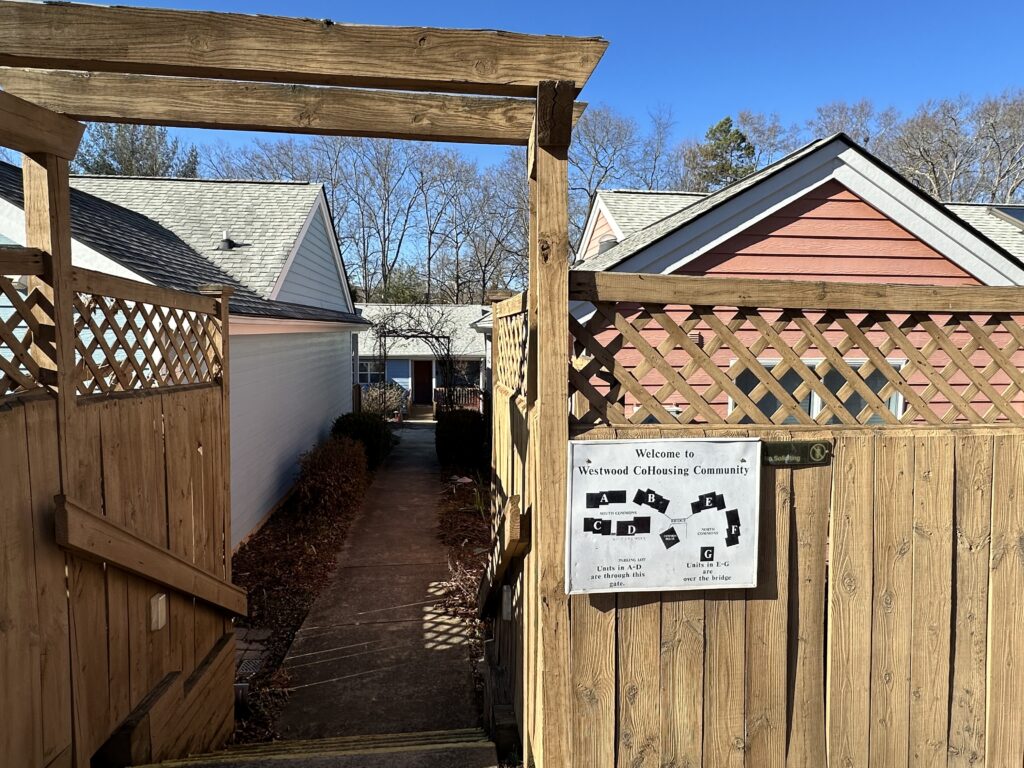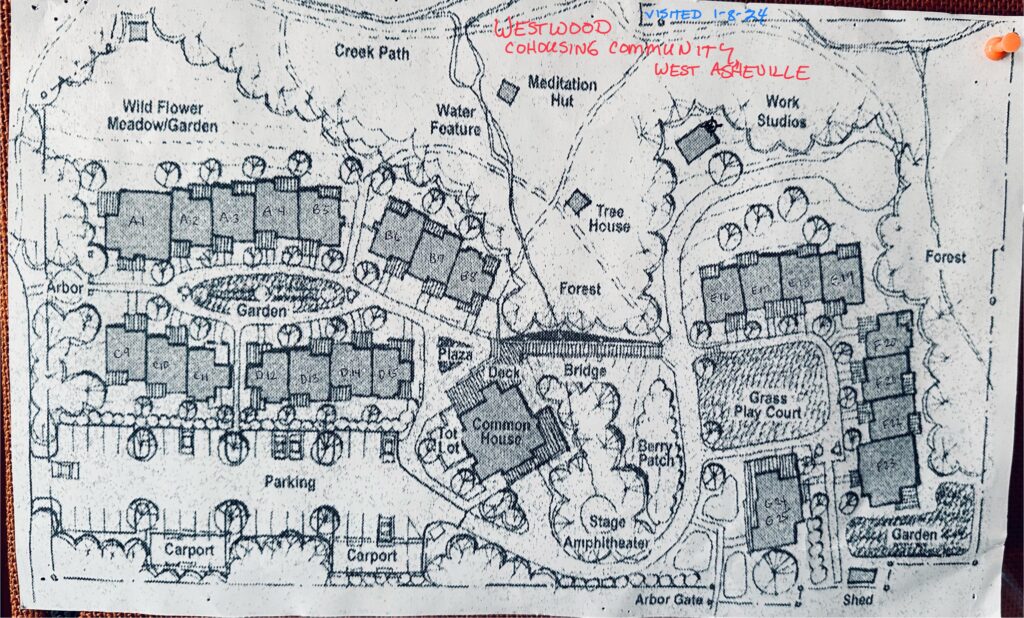Had a fascinating tour of Westwood, which claims to be one of the oldest cohousing communities in the country. To give you an idea of what it takes to create cohousing/intentional community, planning began in 1992, they had an experienced cohousing commercial developer, and they were living there in 1998: six years.
And as anyone who lives in an intentional community will tell you, the decision-making process itself is a significant investment in time. Also, as my tour guide cheerfully said, “In cohousing, everybody’s problem is everybody’s problem.”
On the upside, you develop meaningful relationships, some of which withstand the test of time. On the downside, this kind of living means you will be spending more time on committees, researching issues and making decisions together.
Westwood employs the sociocratic method. Just like a democracy, every sociocracy will look different, but in general, rather than each individual issue (i.e. the community needs new garden hoses; how much plastic are we willing to bring in here?) being brought to the entire community, first a committee forms to research and report back on the issue.
Everyone is invited to the committee meetings: if you don’t go to the committee meeting, then you can’t bring objections when that committee reports to the entire community. As a person who has spent some time in Quaker meetings, I understand the beauty of this and I like it.
Westwood was built “to the T” by the standards set by Charles Durrett, an architect who has pioneered cohousing. As such, it is a walkable neighborhood with 24 clustered dwellings of the same small cottage style that face towards common areas, with a common house in the center of the development, and a woodsy perimeter. Also, per the beautiful European village model, NO CARS come up to anyone’s doors. On the upside, it makes for a more cozy, true facetime experience with your neighbors, more chances of interacting, cleaner air near your doors and windows (no exhaust right at your house), and as my guide said: “Our houses are not life support systems for cars.” On the downside, yes you have to haul or get help hauling your own stuff in and out of your place.
What was most impressive and most beautiful to me was the eco-friendly, home comfort engineering capacities of the design: all buildings feature central radiant-floor heating, passive solar design, a hot water system with solar collectors on the common-house roof, and landscaping according to permaculture principles.
Making possible this design is the Mechanical Room, where I stood before the fantastic mechanical systems that store and return the heat of the sun to the radiant-floor heating system as well as to each unit as it demands hot water. Wow, wow, wow, why isn’t every single apartment and condo complex in this country using this system?
Many thanks to the lovely folks at Westwood for showing me around. I look forward to more conversations with them.


